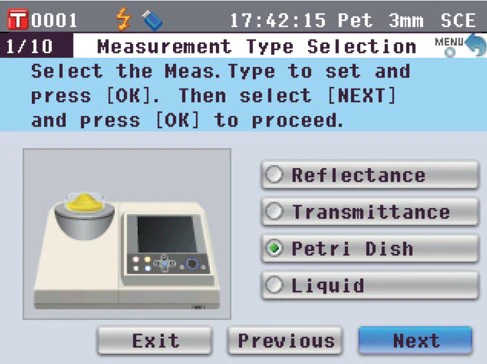Active Pharmaceutical Ingredient (API) Color Measurement

Color measurement plays an important role at several points of pharmaceutical products development, especially before active pharmaceutical ingredients (API) are released for formulation. API is one of the core elements of pharmaceutical products, and any variation in their color can indicate the presence of impurities, contamination, or degradation products. There are various methods of measuring the color of API, namely visual evaluation, color of solution (COS) test, and spectrophotometry.
The visual evaluation method typically involves placing the API against a white background and viewing it under specified lighting. While it is a quick way to determine the color, it is susceptible to human bias for color selection. For instance, the first analyst may describe a batch of API as off-white, but the second analyst may find light orange as a better description. Also, it can be difficult to establish a color threshold for failure. For example, at what point is the batch of API no longer consider light yellow?
The COS test involves dissolving the API in a solvent and measuring their absorbance at a particular wavelength, typically at 440 nm. However, the absorption bands of the impurities in API may not have maximum sensitivity at 440 nm. Also, there is a possibility that the color can derive from more than two different impurities, and the individual levels may be different among different batches. Hence, measurement at multiple wavelengths is required for accuracy. Additionally, the measurement may also be affected due to solvent effects.
The spectrophotometry method offers a more objective approach to color evaluation. It measures the reflectance of the API across the visible wavelength and displays them in various standard color spaces and indices, like CIE L*a*b* and whiteness index. Hence, it offers a quantitative description of color and the establishment of tolerance to determine how much color difference is acceptable. Several standard illuminants (e.g., D65, A, etc.) and standard observer angles (e.g., 2° or 10°) are available to mimic different viewing environments and eliminate subjectivity across observers.
 Konica Minolta Spectrophotometer CM-5 is a versatile color measuring instrument ideal for various stages of pharmaceutical products development and quality control. It is capable of both reflectance and transmittance measurement and can measure samples ranging from powder and pills to liquid with ease. The CM-5 can display measurement results in various color spaces and indices like CIE L*a*b*, L*C*h, European Pharmacopoeia (EP), US Pharmacopeia (USP), Gardner, Hazen/APHA, Iodine, Whiteness Index (WI), and Yellowness index (YI).
Konica Minolta Spectrophotometer CM-5 is a versatile color measuring instrument ideal for various stages of pharmaceutical products development and quality control. It is capable of both reflectance and transmittance measurement and can measure samples ranging from powder and pills to liquid with ease. The CM-5 can display measurement results in various color spaces and indices like CIE L*a*b*, L*C*h, European Pharmacopoeia (EP), US Pharmacopeia (USP), Gardner, Hazen/APHA, Iodine, Whiteness Index (WI), and Yellowness index (YI).
Pharmaceutical color measurement is made simple with CM-5. Check out this video to learn more about the versatility and simplicity of CM-5.
Need help implementing instrumental color measurement in the development and quality control of pharmaceutical products? Get in touch with our color specialists for a free consultation and assistance in finding the right solutions for your application needs.
